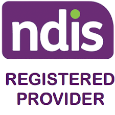Apps
Positive Behaviour Support Strategies for Students with ASD
Positive Behaviour Support Strategies for Students with Autism Spectrum Disorder: A Step by Step Guide to Assessing, Managing and Preventing Emotional and Behavioural Difficulties provides templates, banks of practical strategies and a framework for developing a behaviour support plan so that all staff supporting a child can respond to challenging behaviours effectively and efficiently in a planned, safe and least disruptive manner. This book will educate, empower and enable you to help your child learn positive ways of behaving and managing their emotions, so they can spend more time learning and developing, and you can spend more time doing what you do best: teaching.

Autism spectrum disorder (ASD) is a neurodevelopmental disorder that impacts how people interact with others, communicate, learn and behave. Repetitive and characteristic patterns of behaviour, interests, or activities are common. Each child with ASD presents with unique needs that when left unmet can result in exhibiting behaviours that can disrupt their learning and the learning of others. Without the necessary knowledge and tools, educators can often find it difficult to meet the needs of their students effectively. Does this sound familiar?
Positive Behaviour Support Strategies for Students with Autism Spectrum Disorder: A Step-by-Step Guide to Assessing, Managing, and Preventing Emotional and Behavioural Difficulties is a highly practical book that can be used by educators in childcare, preschool, schools, and community services to learn the evidence-based approach of Positive Behaviour Support (PBS) to assess, manage, and prevent challenging behaviours in children of all ages with ASD.
Learn how to complete a functional behaviour analysis to document behaviour incidents, identify triggers, and determine the reasons for specific challenging behaviours. Consult the bank of proactive strategies that can be tailored to an individual child’s environment to prevent triggers and promote positive ways of communicating, behaving, and managing emotions. Develop an escalation profile to describe the different verbal and non-verbal signals the child exhibits as their levels of stress, anger, and/or frustration increase, and determine strategies for responding to each escalation stage.
This book provides templates, banks of practical strategies, and a framework for developing a behaviour management plan so that all staff supporting a child can respond to challenging behaviours effectively and efficiently in a planned, safe, and least disruptive manner. This book will educate, empower, and enable you to help your child learn positive ways of behaving and managing their emotions. They can spend more time learning and developing, and you can spend more time doing what you do best: teaching.
This invaluable resource is useful for parents, caregivers, childcare educators, primary and secondary educators, supervisory, allied health professionals, and mental health professionals.
